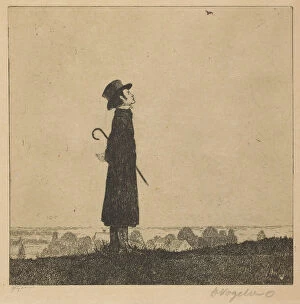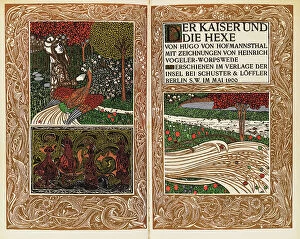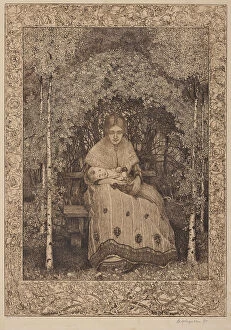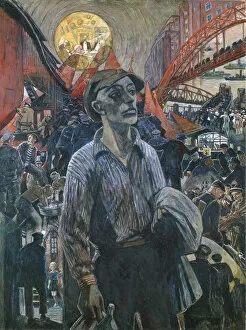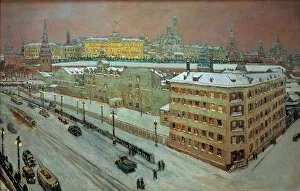Vogeler Collection
Heinrich Vogeler
For sale as Licensed Images
Choose your image, Select your licence and Download the media
Heinrich Vogeler: A Versatile Artist's Journey from Birch Trees to Bolshevik Propaganda and Beyond Heinrich Vogeler (1872-1942) was a German artist known for his diverse body of work, which spanned various genres and mediums. From the tranquil beauty of his Birches at the Barkenhoff (1913) to the gritty realism of Hamburg Comrade (Worker of a Hamburg Shipyard) (1928), Vogeler's art reflected his ever-evolving perspective on the world around him. In the 1920s, Vogeler's art took a political turn as he became involved with the Bolshevik movement. He created agitation panels for the Soviet Union, including Karelia and Murmansk (1926) and Baku (1927), which used bold colors and dynamic compositions to promote revolutionary ideals. Vogeler's travels to the Soviet Union also inspired landscapes such as Kandalaksha (1925) and Moscow at night (1939), which captured the raw energy and industrial might of the emerging socialist state. Despite his political leanings, Vogeler's art remained versatile. He continued to explore various themes and styles, from the surreal The Birth of the New Human (1923) to the nostalgic Old village in the Caucasus (1940). Even before his political awakening, Vogeler's art was already gaining attention. An advertisement for his curative compound, created as a line engraving in 1897, showcases his early skill and commercial savvy. Throughout his career, Heinrich Vogeler's art remained a testament to his curiosity and adaptability, making him a fascinating figure in the history of modern art.

